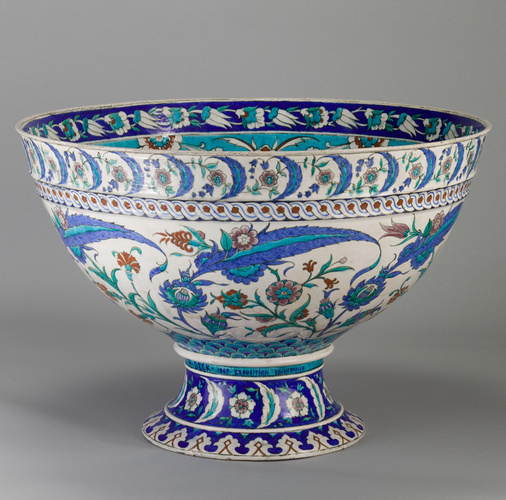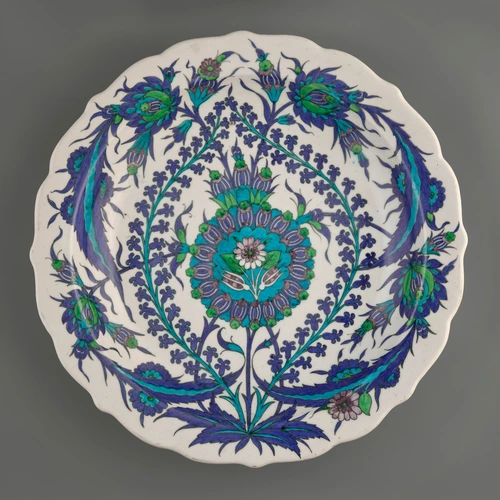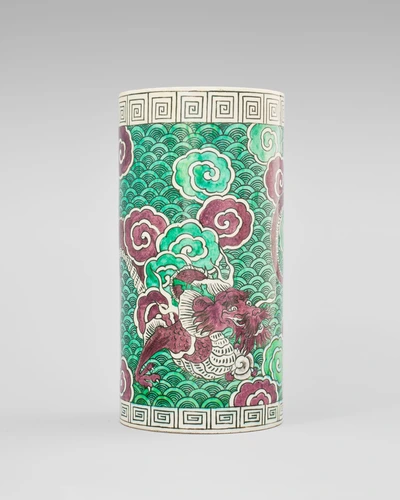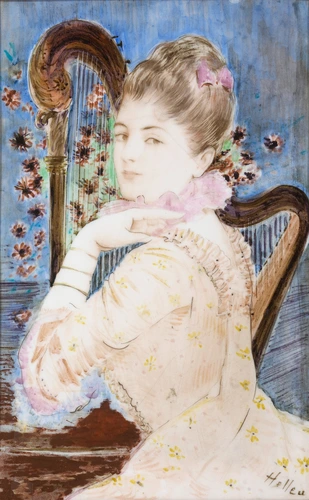Jardinière suspendue
In the 1870s, Theodore Deck became exceptionally skilful at producing transparent enamels. Always attracting a changing stable of notable artists, he continually diversified his production. Without turning his back on his first love for Middle Eastern ceramics, he looked more and more to the Far East for his inspiration, applying his cloisonné and flambé colours to shapes and decorations taken from Japanese and Chinese artisans. This hanging planter, from a very rare model, which has fortunately kept all its original mountings, is a superb example of this constant experimentation in both techniques and aesthetics.
The idea to transpose shapes taken from Chinese and Japanese bronzes into ceramic forms came from Emile Reiber, an architect and decorator who had worked closely with Deck since the 1860s. However, this piece is not from a known model. It seems to be a free interpretation, bringing together Far Eastern sources and Middle Eastern inspiration. In this respect, the shape of the opening could be a reference to a motif of Islamic architecture.
The originality of this jardinière lies not only in its stunning shape, derived from a Chinese or Japanese hanging, but also in the introduction of a brilliantly coloured, Japanese-style floral decoration. Although, at this time, Deck freely used decorations like these in his production of decorative ceramics, the pieces he made when imitating bronzes were usually monochrome or bicoloured. Here, on the other hand, the luminous blue background and the design of chrysanthemums, branches of flowers and butterflies, recall the bright colours of the cloisonné enamels which were imported in great numbers.








